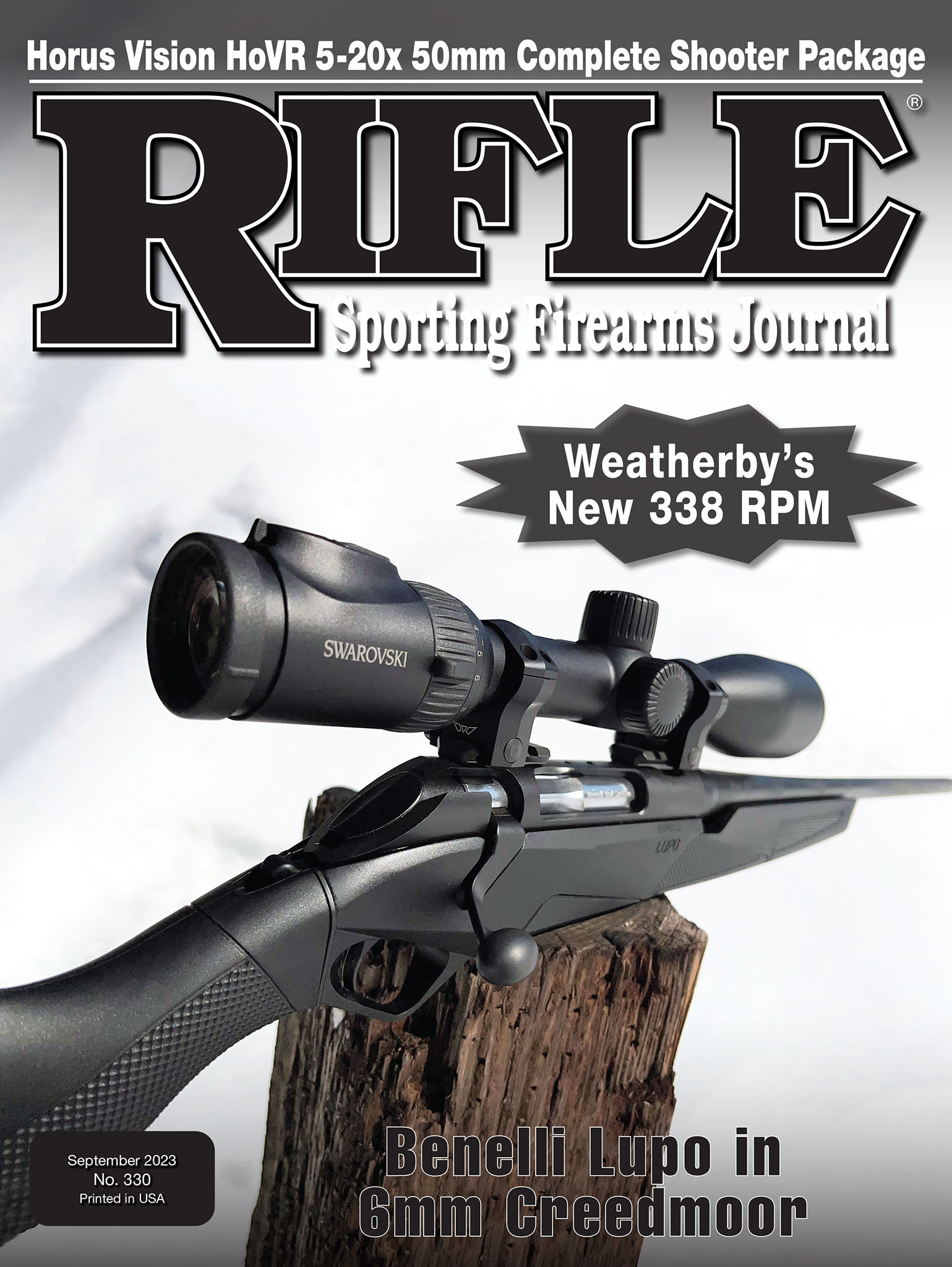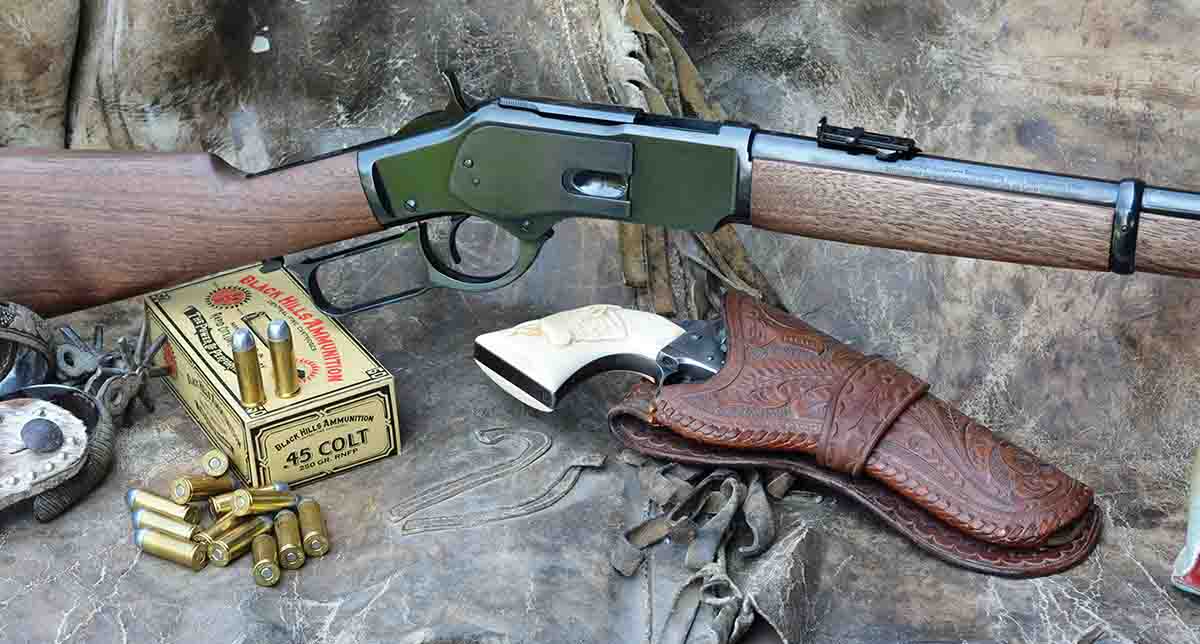
The Winchester Model 1873 was widely popular on the western frontier, but was also popular with hunters in eastern U.S. The modern Miroku-produced rifle closely resembles the original, but is offered in additional calibers and appeals to modern shooters and hunters.
The Winchester Model 1873 is arguably that company’s most famous rifle that served to bring huge fame and fortune to the brand name, as it was a high-quality repeater, sleek, accurate and very reliable. It also handled the elements including dirt, moisture and neglect with ease. It played an important role in settling the western frontier and became widely popular with farmers and ranchers, hunters, exhibition shooters and explorers. Due to its many virtues, it was used extensively by a long list of both lawmen and outlaws, including Billy the Kid. From 1873 through 1923, more than 720,000 units were produced; however, the majority of those guns were manufactured during the black-powder era. Due to their quality and historical significance, the prices of original rifles have soared in recent years. But due to a combination of their notable value, and that most guns were intended primarily for black-powder ammunition and neither were they offered in modern calibers, originals are often not the best choice for someone that wants a shooter.
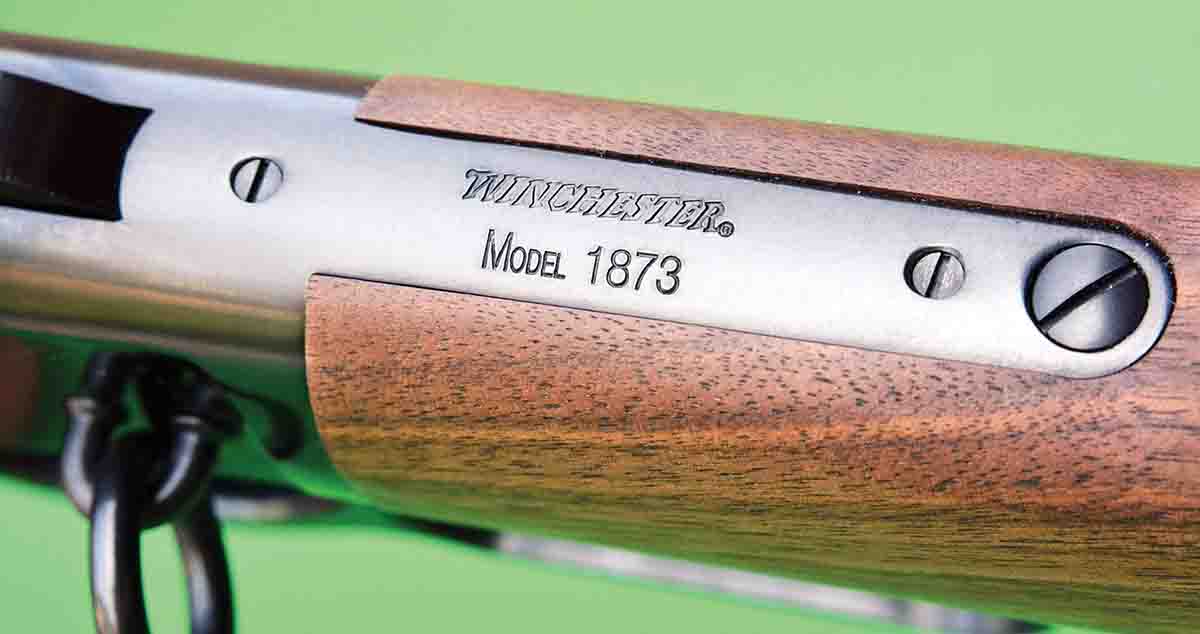
The tang is marked “Winchester Model 1873.”
During the early 1970s, the Italian-based manufacturer A. Uberti recognized the demand for a modern Model 1873 reproduction that could be fired with smokeless powder loads and could be chambered in modern revolver cartridges such as the 357 Magnum, the ever-popular 45 Colt (that was never offered in original rifles) and others including all original calibers. These are very good, proven rifles that have become widely popular with shooters, hunters and cowboy action competitors.
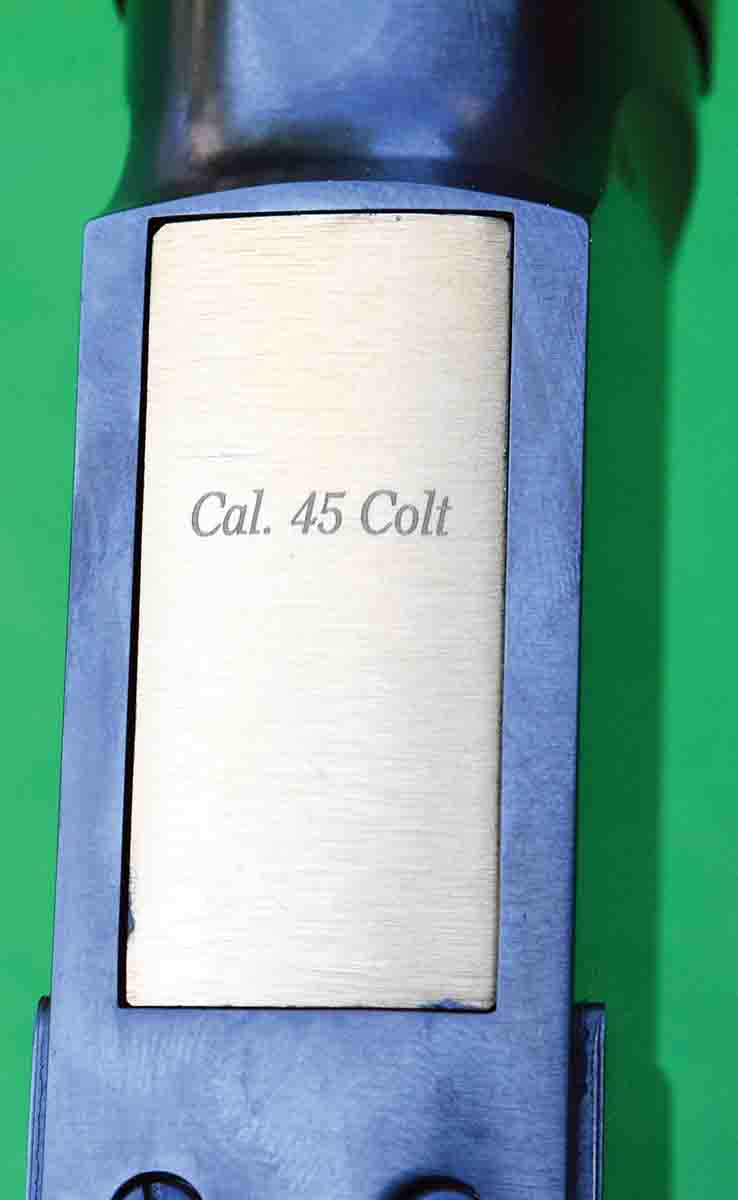
The bottom of the carrier is marked “Cal. 45 Colt.”
Success is wonderful, but it often results in stiff competition, which can be a good thing as companies try to better each other. In this instance, Browning Arms Company (BACO) has begun importing the Japanese-produced Miroku Model 1873 that boasts of carrying the Winchester name that is beautifully machined, but I am getting ahead of myself.
My sample gun is a Model 1873 Carbine, full blue, with saddle ring and chambered in 45 Colt. It features a 20-inch barrel just like the originals (unlike the competition that has a 19-inch barrel). The black walnut stock is oil finished, which more closely resembles the originals. It features a ladder rear sight with marked increments out to 2,000 yards. Plus, the sliding sight actually stays in place while firing.
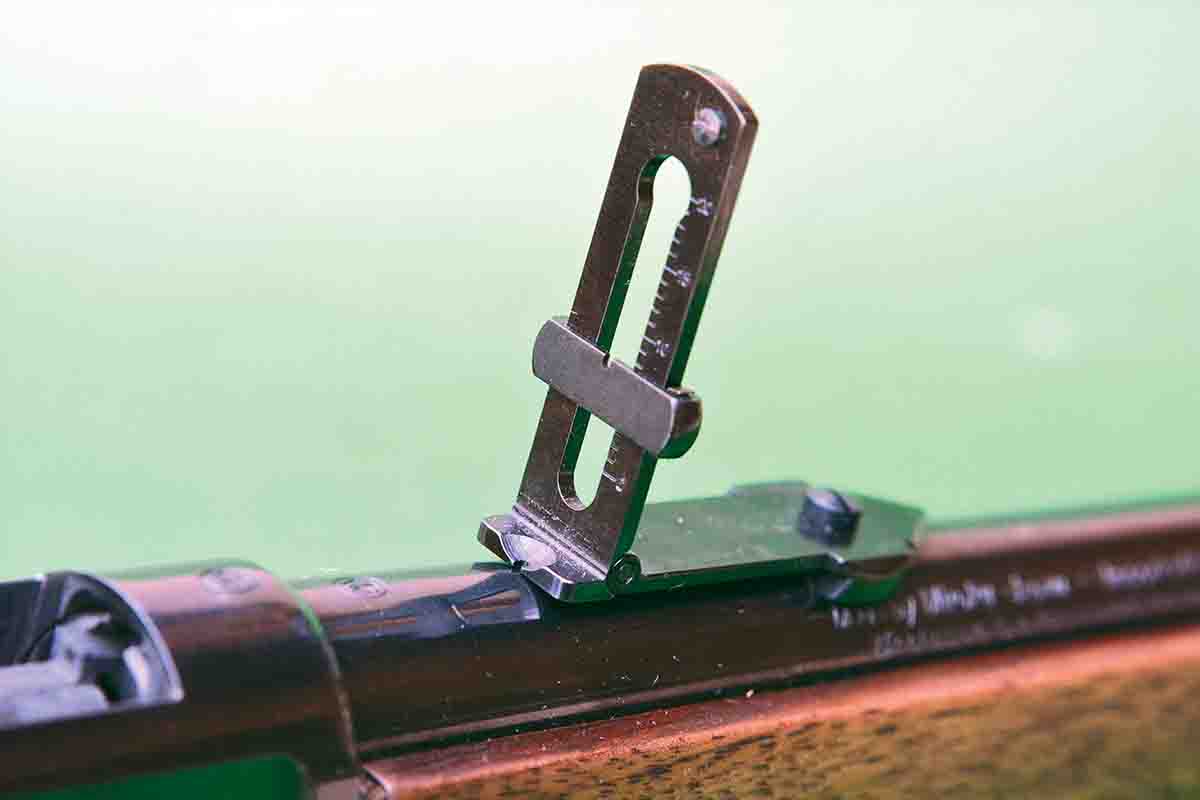
The ladder sight is of high quality and offers reference markings out to 2,000 yards.
One of the first standout features is the excellent machine quality. Like other Miroku firearms, it exhibits overall high quality, but it seems to offer better fit and finish than the majority of its products that are so popular in U.S. In working the action for the first time, I immediately noticed that the lever cycle is shorter than the Italian reproductions, making it closer to the originals, but that feature should not be confused with the short-stroke actions that some cowboy competitors have adopted. The action is especially smooth and timing is perfect as it fed, fired and ejected empty cases slick as a whistle. To date, nearly 1,000 rounds have been fired in the test carbine and it has performed flawlessly.
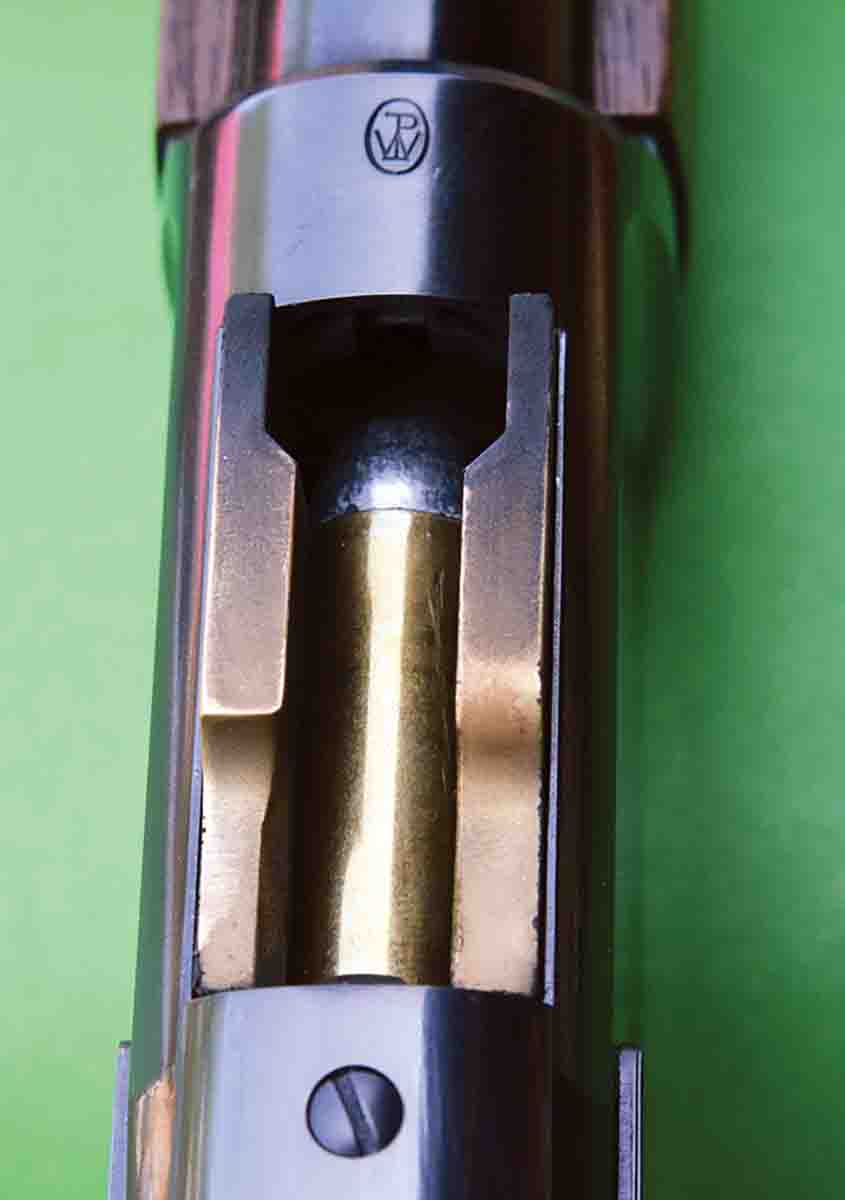
The Model 1873 pattern rifles boast of a carrierthat literally holds the cartridge in perfect alignment with the chamber as the bolt closes to chamber the round. This results in reliable, smooth feeding.
It is noteworthy that one of the features that made the original Model 1873 so popular, as well as reproductions finding widespread acceptance with cowboy action competitors, is that the carrier literally holds a cartridge in place while lifting it up from the magazine, which is then pushed straight into the chamber by the bolt as the lever is closed. This is a very positive feeding system and explains why the design was so popular yester-year and today. This also explains why so many frontiersmen, hunters and lawmen favored the 1873 even after more modern levergun designs were invented including the notable showman and exhibition shooter Buffalo Bill.
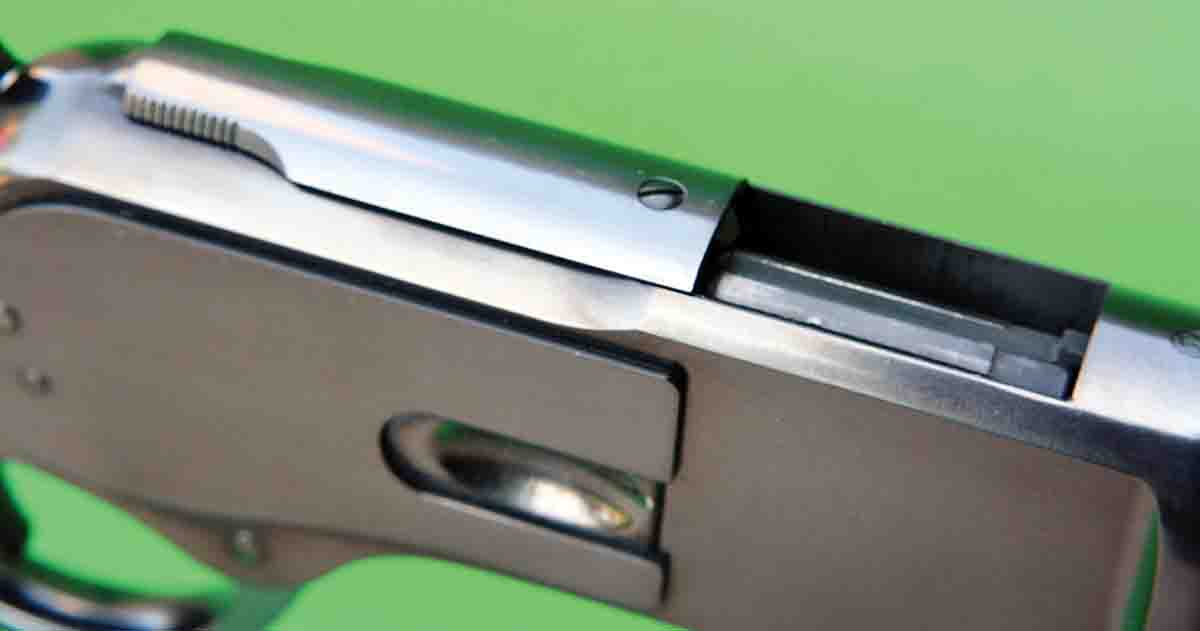
The Miroku Winchester Model 1873 action closely resembles the original 1873 design including the dust cover.
For the past 20-plus years, Miroku leverguns have been fitted with a sliding tang safety and feature a rebounding hammer; however, this shooter is thrilled that the Model 1873 is void of that feature. It functions 100 percent identically to the originals with a three-position hammer and quarter cock-style safety. Likewise, it retains the lever latch, dust cover and even has the caliber marking on the bottom of the brass carrier. The trigger pull broke cleanly at 64 ounces or 4 pounds. The barrel is hammer forged and the bore shines like a mirror, which is ideal for cast bullets. The barrel features six lands and grooves and has a 1:26-inch twist.
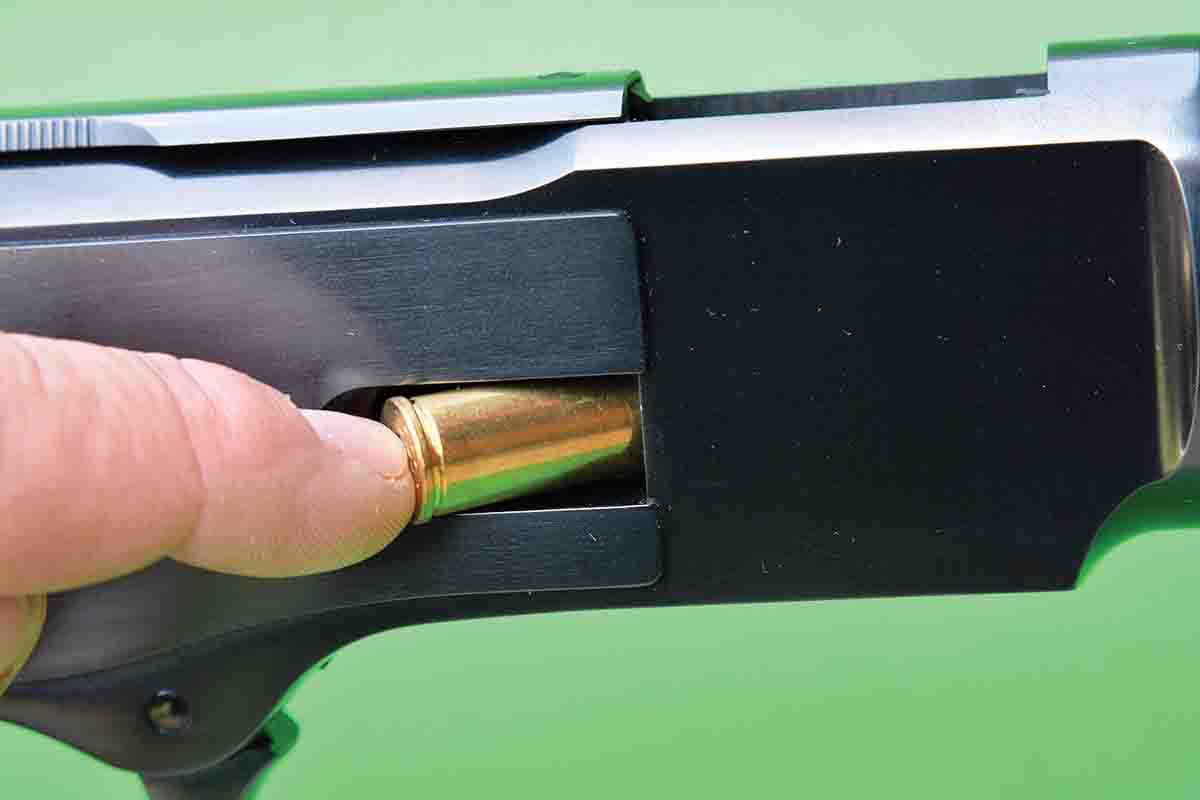
The new Winchester 1873 Carbine loaded, fed, fired and ejected cases flawlessly.
After firing around 200 rounds, it was time to settle down on sandbag rests for accuracy testing at 50 yards. The rifle was held firmly back against the shoulder while my left hand was placed between the forearm and the sandbags and held the forearm firmly (including pulling backwards). This method seems to give the best accuracy results with leverguns. The front sight appeared to be made of brass, so it was blackened for proper contrast with the target when shooting for accuracy. The front sight was held exactly level with the rear sight notch, while the bottom of the white diamond-shaped target was placed in the center of the front sight blade.

The new Winchester Model 1873 is manufactured in Japan by Miroku and imported by Browning Arms Company (BACO).
As can be seen in the accompanying table, select factory loads produced 1.65- to 3.10-inch, five-shot groups at the previously indicated 50 yards. For example, a Buffalo Bore 225-grain XPB Standard Pressure load reached 1,259 feet per second (fps) and averaged 1.65-inch groups. Another good load included Black Hills Ammunition Cowboy that contained a 250-grain lead roundnose flatpoint (RNFP) bullet that clocked 985 fps and groups averaged 2.25 inches.
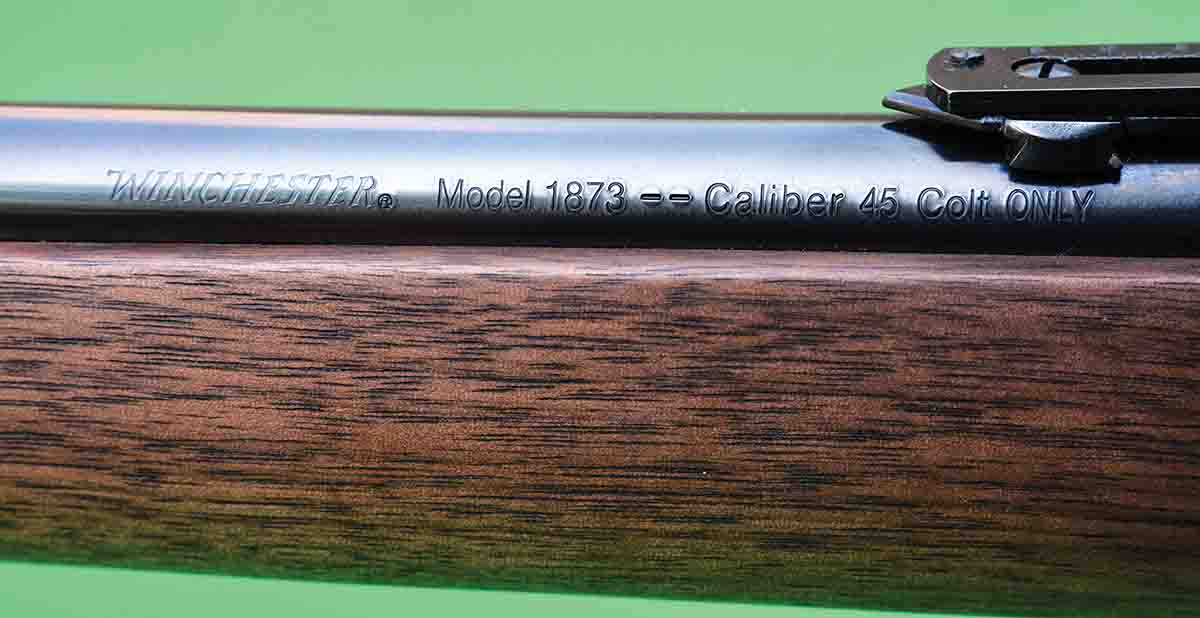
Brian’s Model 1873 test Carbine was chambered in the widely popular 45 Colt.
Moving on to a few select hand-loads, overall accuracy improved. The best accuracy was obtained using cast bullets from RCBS mould No. 45-250-FN that throws bullets from my alloy at 265 grains. Using 7.1 grains of Accurate No. 2 powder produced 1,082 fps and yielded an average group size of 1.05 inches. A couple of other notable loads included cast bullets from Redding mould No. 955, which is a roundnose flatpoint design, that when cast from my alloy, is 257 grains. Using new Starline cases that were first sized in a Redding Dual Ring Carbide sizer die, neck expanded and then primed with CCI No. 300 primers, 8.8 grains of Alliant Power Pistol powder reached 1,209 fps and produced an average group size of 1.15 inches. Another load that was almost equal in accuracy contained the same bullet, but pushed to 1,144 fps using 7.5 grains of Winchester W-244 powder that grouped into 1.20 inches. Loads that were developed using the 250-grain RNFP cast bullet from Missouri Bullets using 8.3 grains of Alliant BE-86 powder yielded 1,160 fps and grouped into 1.75 inches.
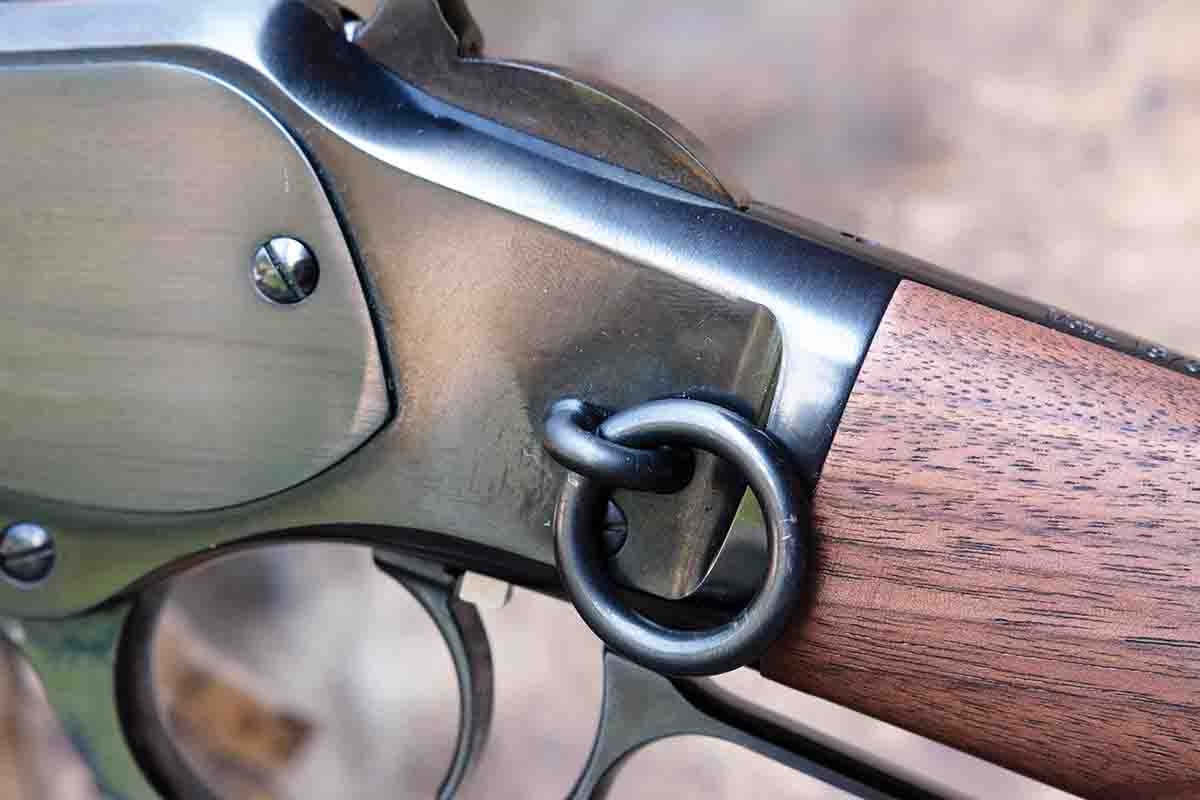
The Miroku Winchester Model 1873 Carbine features the traditional saddle ring.
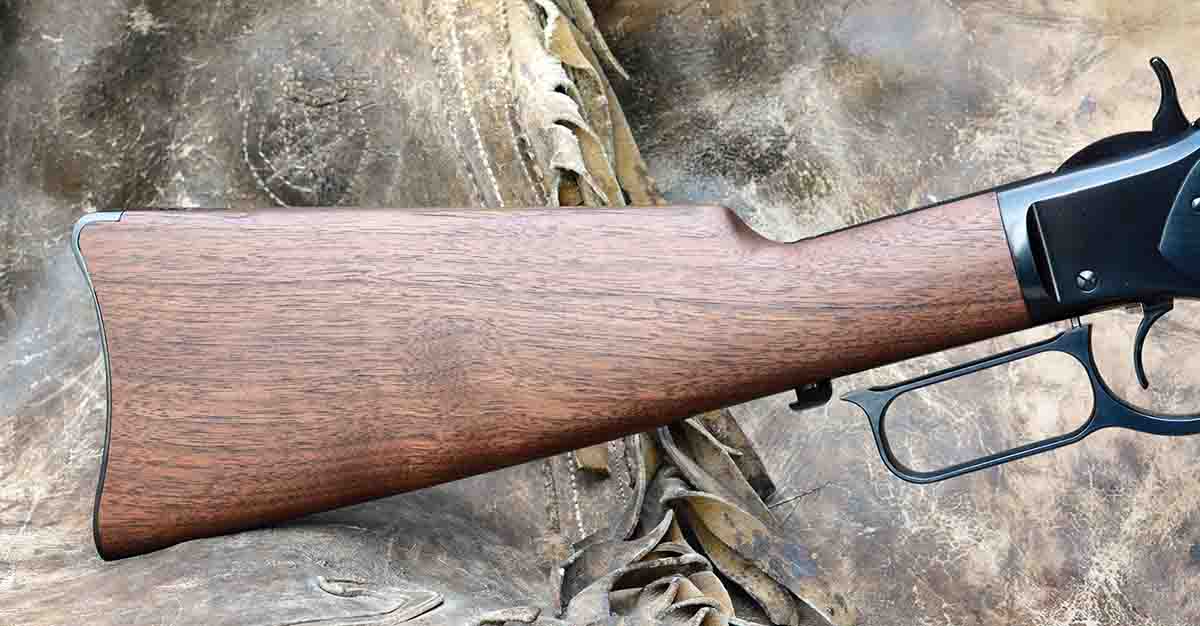
The stock is oil finished and offers a more traditional appearance.
In addition to the 45 Colt Carbine used herein, the Winchester Model 1873 is available in several other rifle and carbine configurations and offered in 357 Magnum and 44-40 Winchester. I was pleased with the overall function, accuracy and quality of the new Miroku.
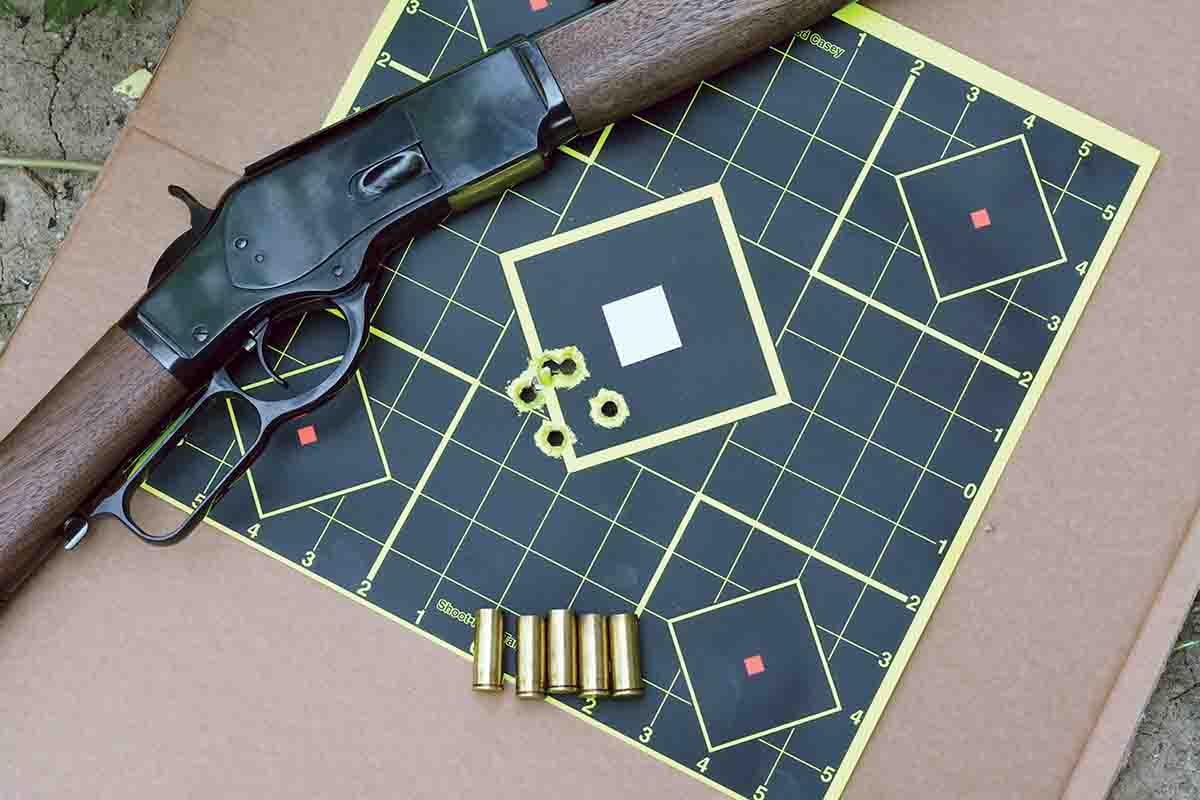
Brian managed to obtain 50-yard groups that measured around 1 inch.












.jpg)
.jpg)


